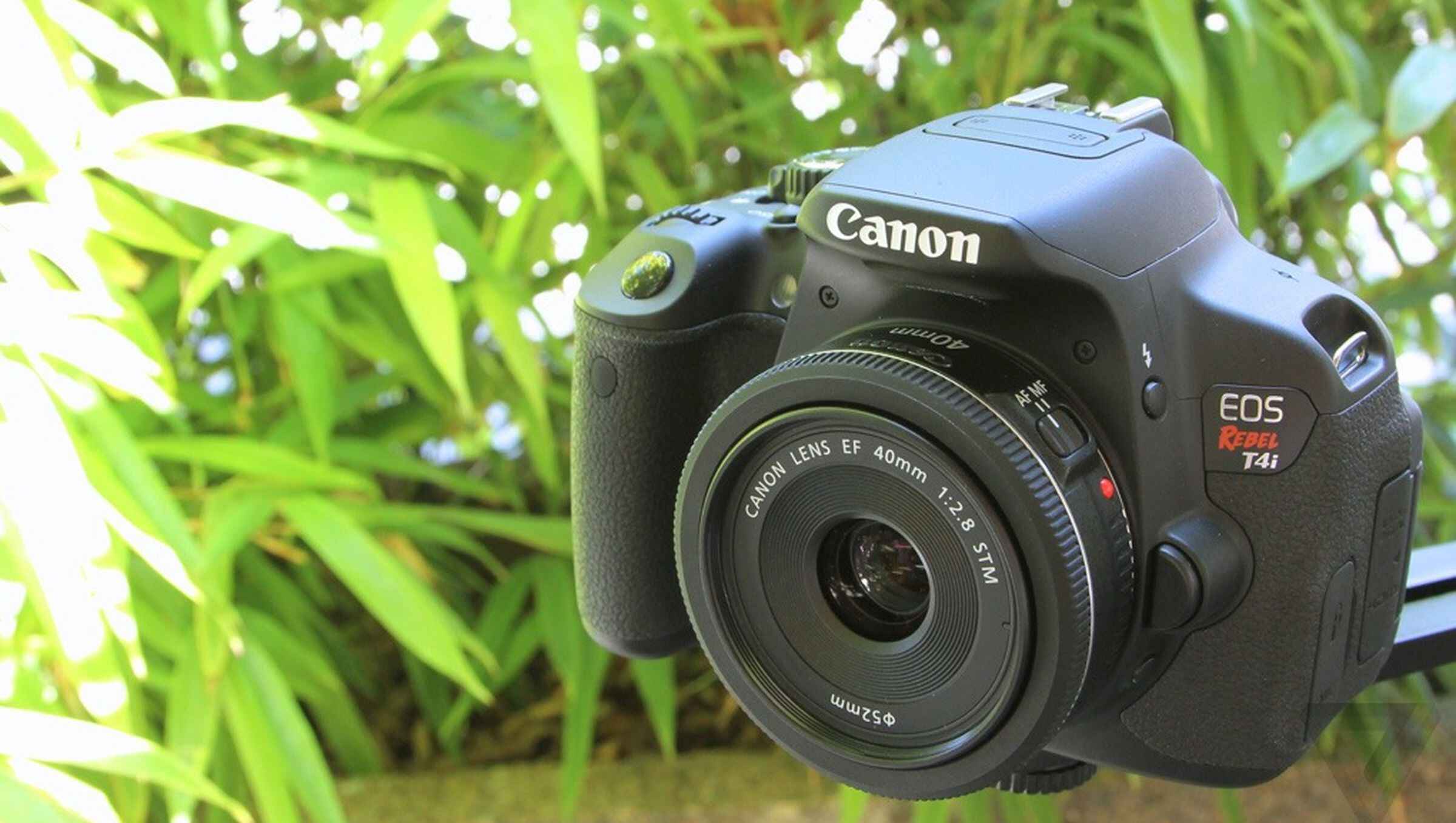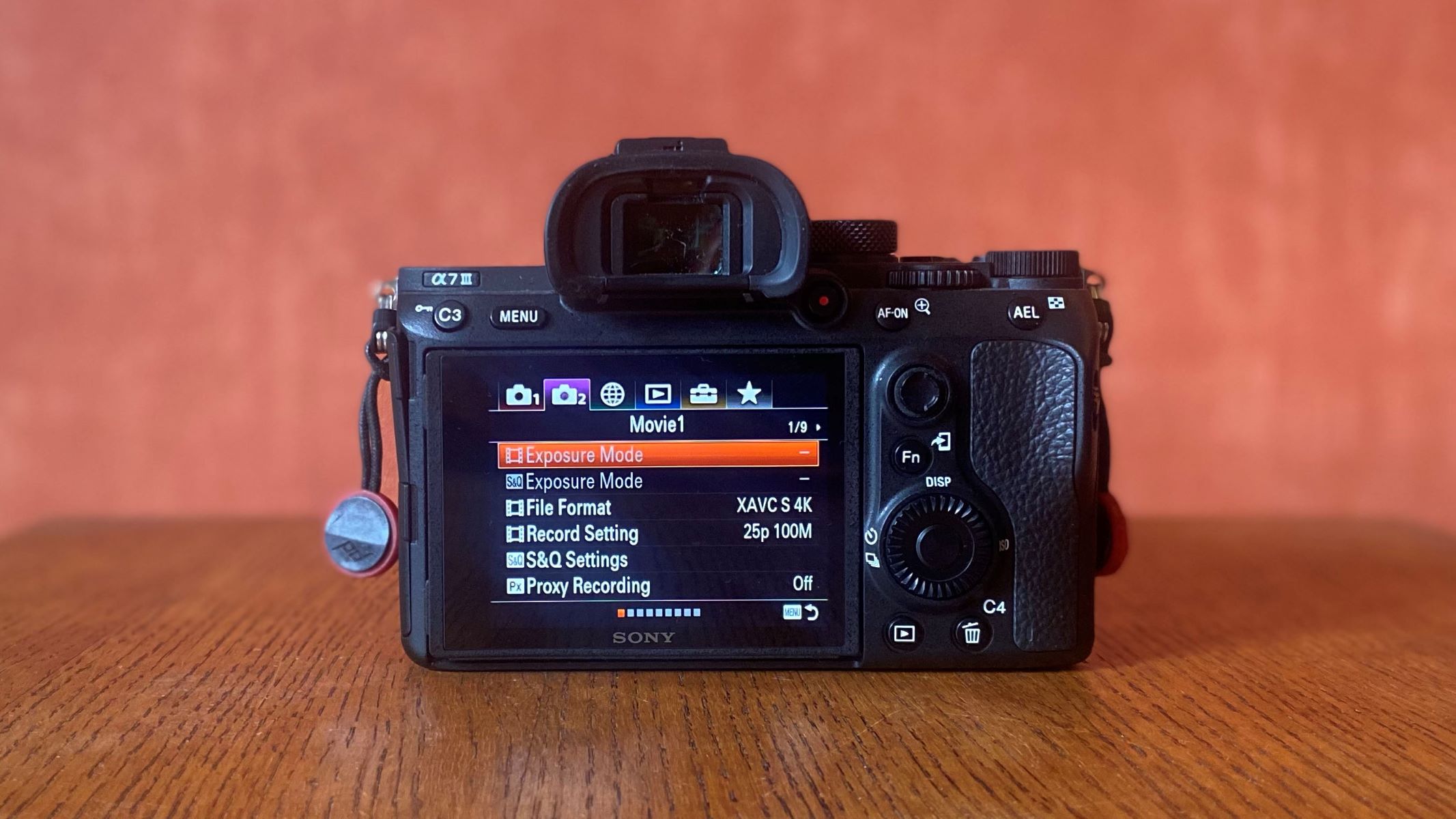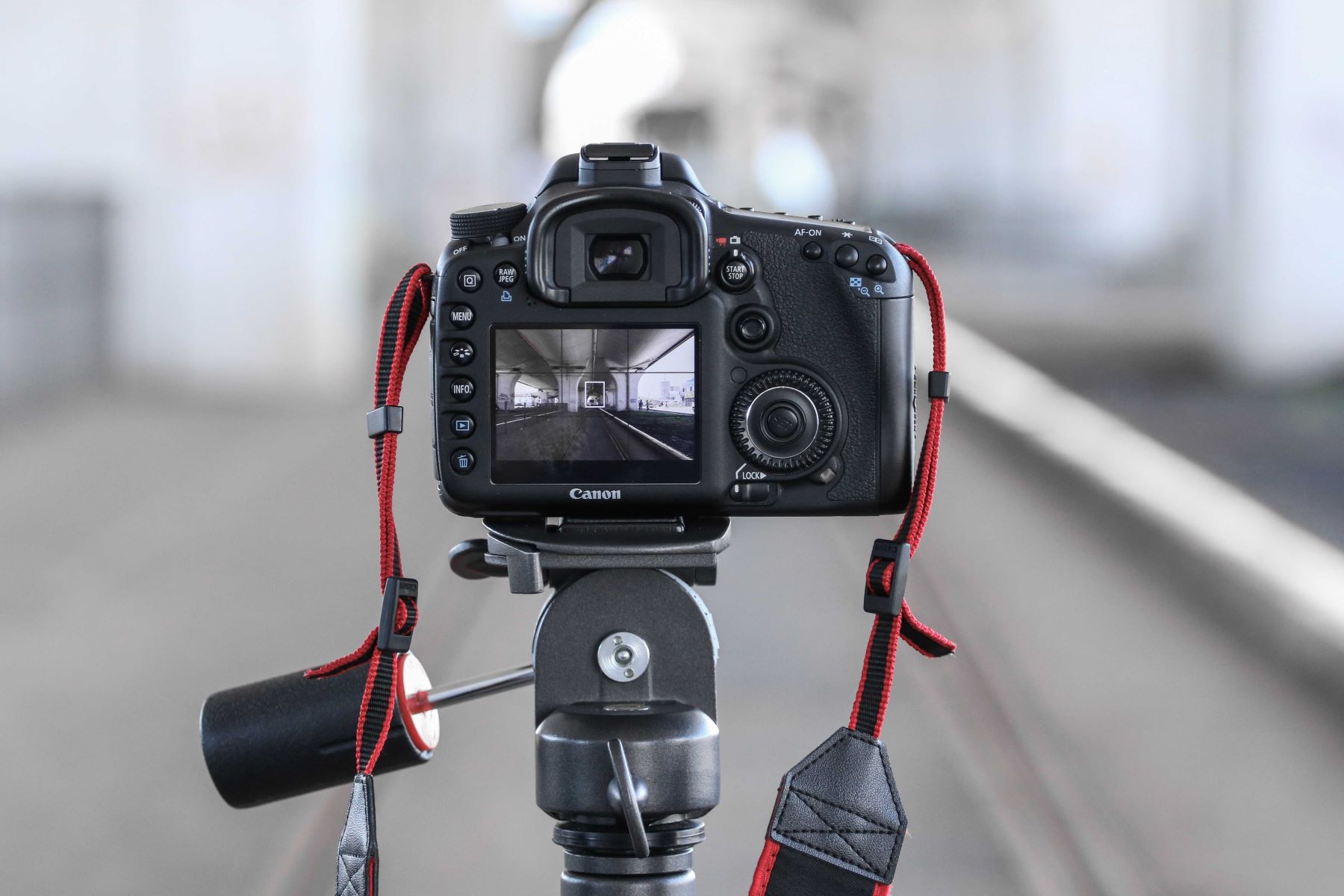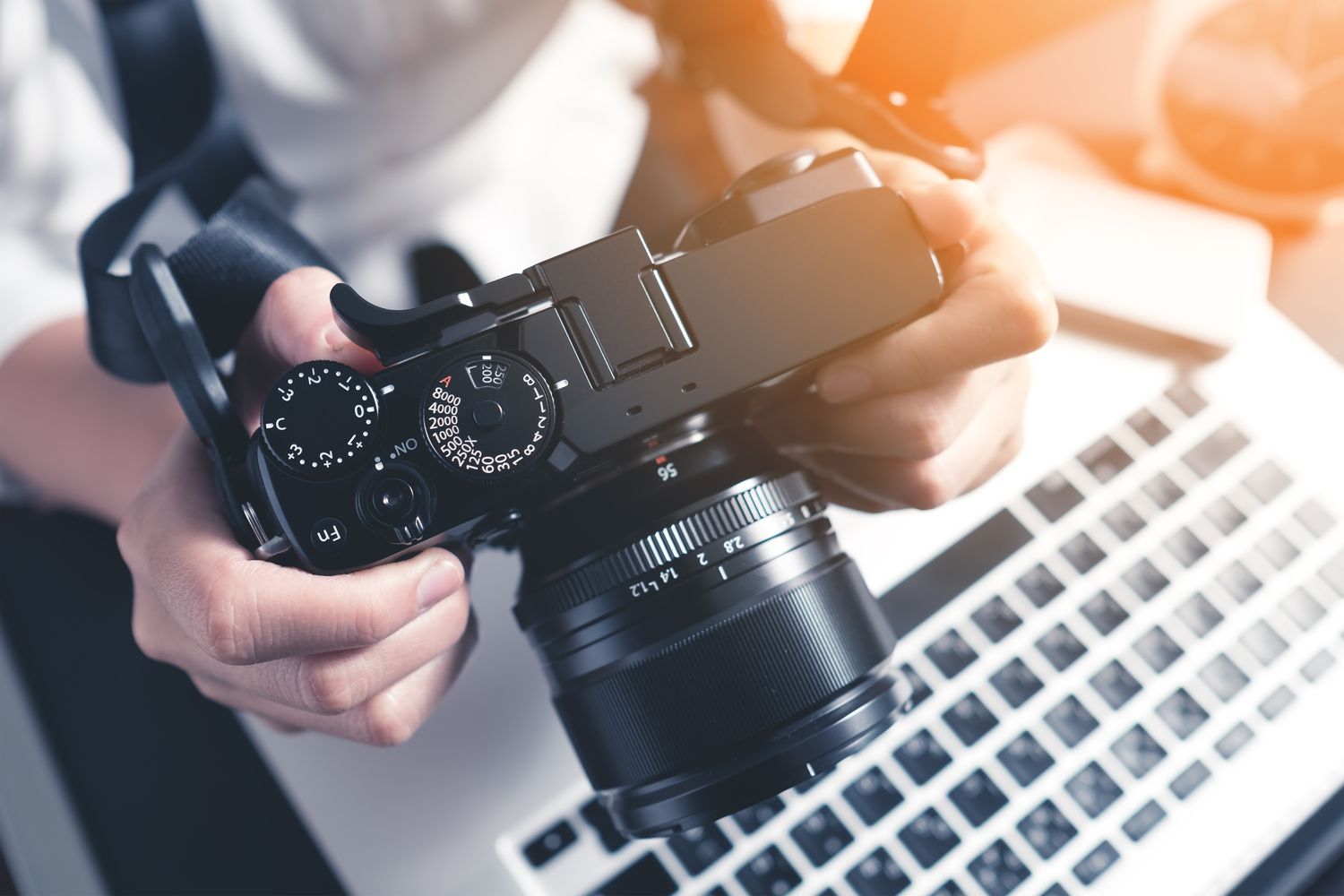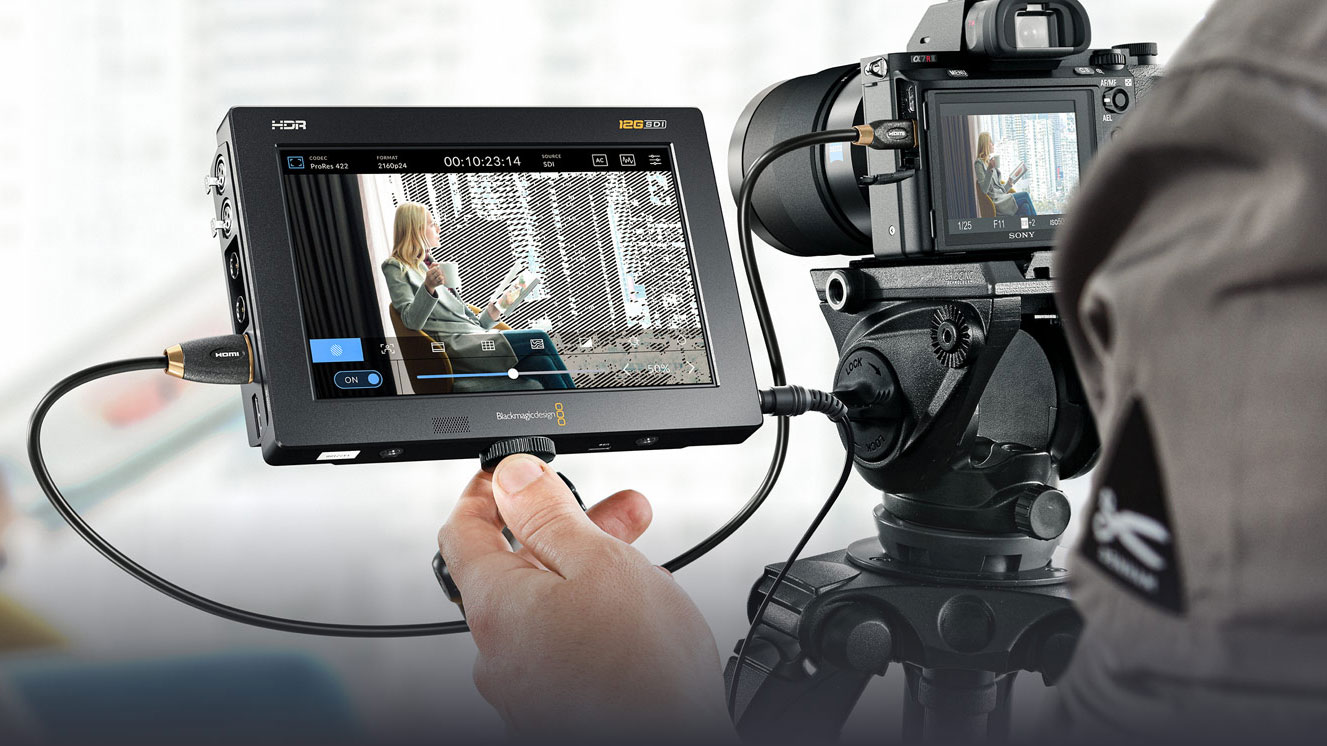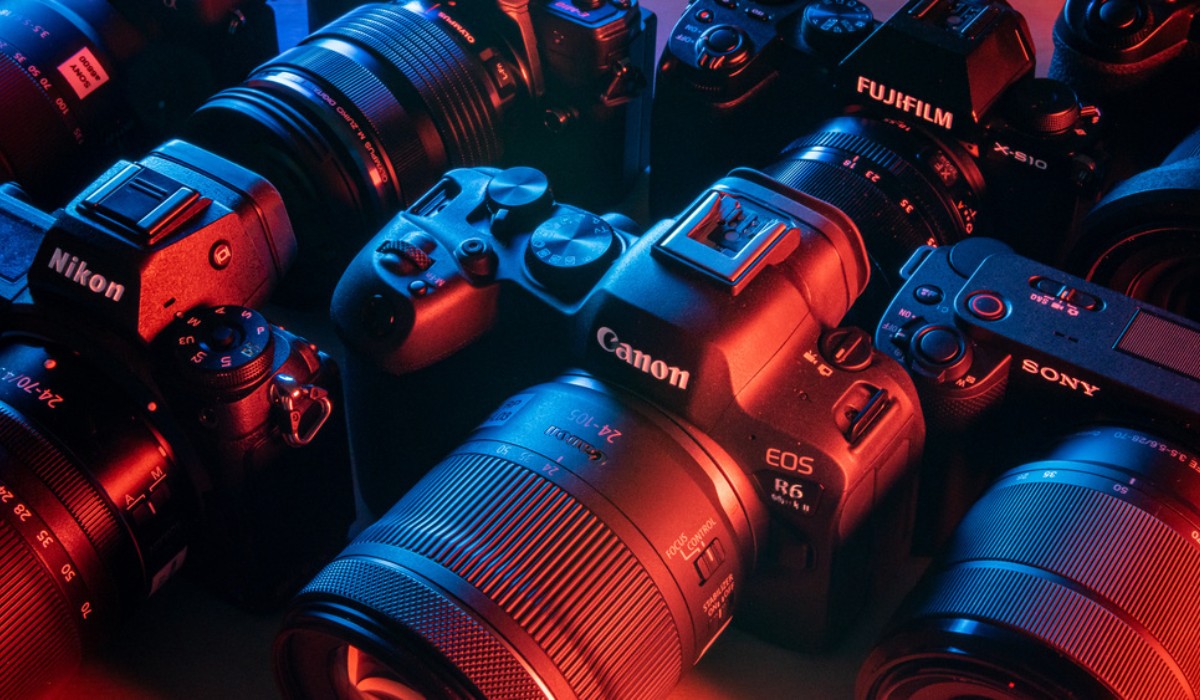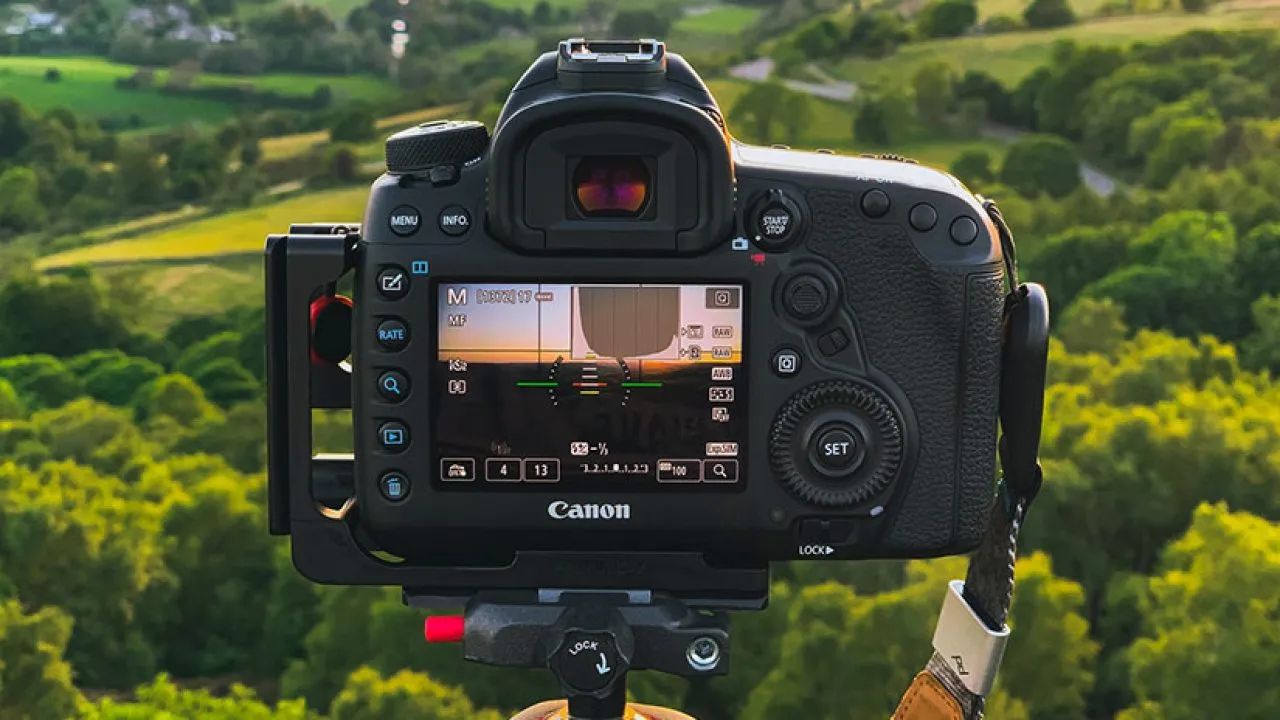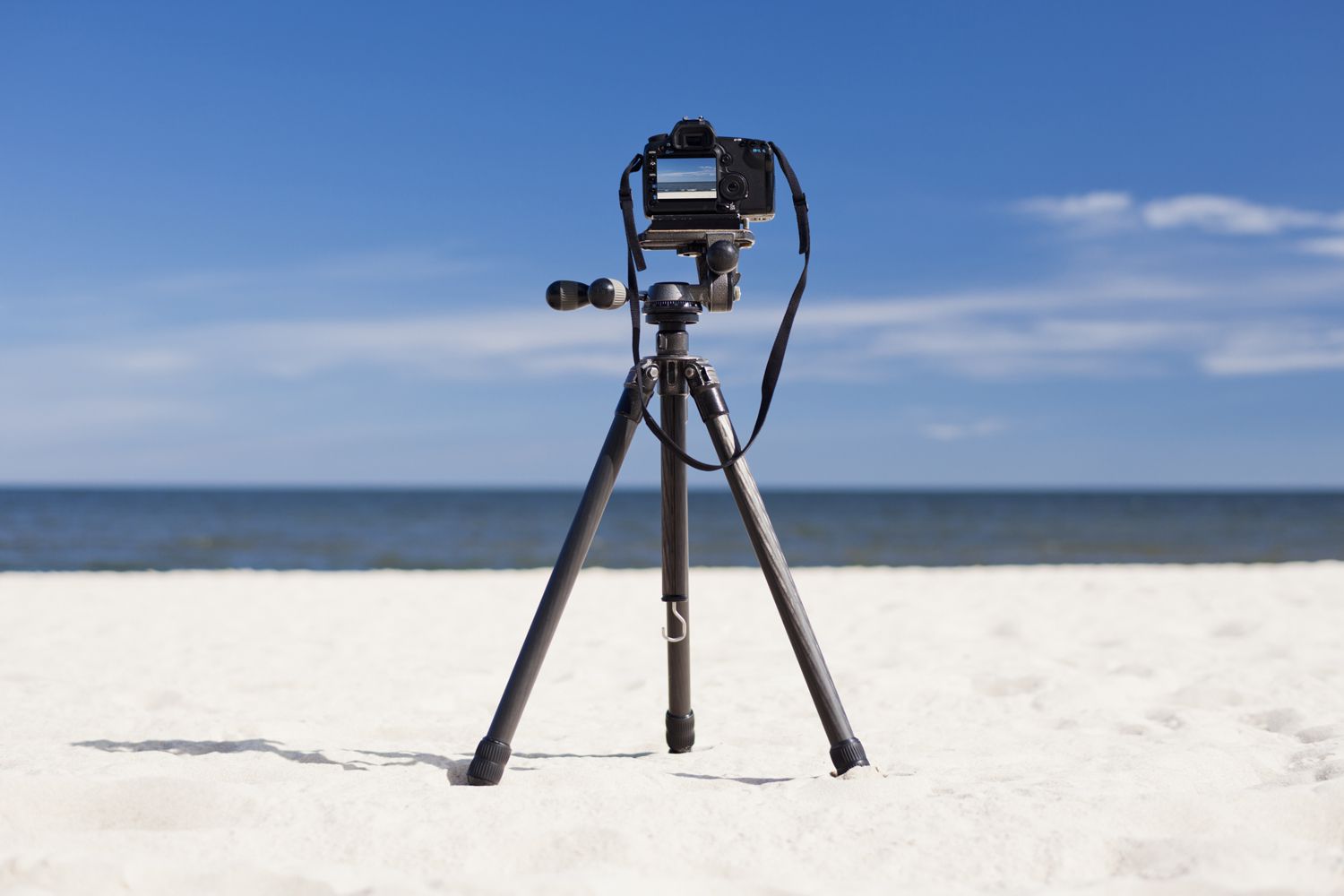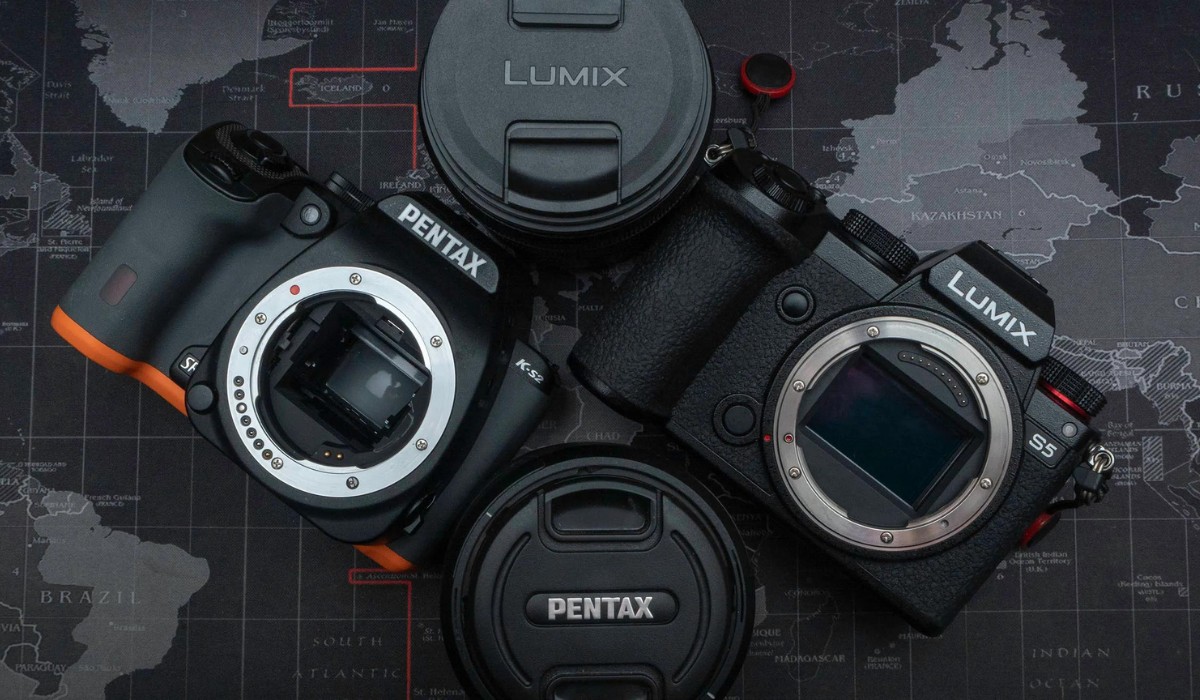Introduction
Understanding the various settings on a DSLR camera is essential for capturing stunning photographs. One crucial aspect of photography is the ISO setting, which plays a significant role in determining the exposure of an image. ISO, which stands for International Organization for Standardization, is a critical component of the exposure triangle, along with aperture and shutter speed. It directly impacts the sensitivity of the camera's sensor to light, influencing the brightness and graininess of the captured photos.
As a photographer, mastering the ISO setting can greatly enhance your ability to adapt to different lighting conditions and achieve the desired visual effects in your images. Whether you are shooting in low-light environments, capturing fast-moving subjects, or aiming for a specific artistic style, understanding how to manipulate ISO settings on your DSLR camera is indispensable.
In this comprehensive guide, we will delve into the intricacies of ISO and its significance in photography. By exploring the relationship between ISO and exposure, learning about ISO settings on a DSLR camera, and discovering strategies for choosing the right ISO for your shots, you will gain valuable insights into leveraging this fundamental element to elevate your photography skills. Additionally, we will provide practical tips for using ISO effectively, empowering you to maximize the potential of your DSLR camera in diverse shooting scenarios.
Whether you are a novice photographer seeking to grasp the basics of ISO or an experienced enthusiast aiming to refine your techniques, this guide will equip you with the knowledge and expertise to harness the power of ISO and elevate the quality of your photographic endeavors. Let's embark on this enlightening journey to unravel the significance of ISO on a DSLR camera and unlock its transformative impact on your photography.
Understanding ISO
ISO, in the realm of photography, refers to the sensitivity of the camera’s image sensor to light. The acronym ISO stands for the International Organization for Standardization, which is responsible for setting and maintaining international standards across various industries, including photography. In the context of digital photography, ISO determines the camera sensor’s sensitivity to light, influencing the exposure of an image. Understanding this fundamental concept is crucial for photographers aiming to master the technical aspects of their craft.
When the ISO setting is increased, the sensor becomes more sensitive to light, allowing for the capture of well-exposed images in low-light conditions. However, this heightened sensitivity also introduces digital noise or graininess, which can compromise the image quality. Conversely, lowering the ISO reduces the sensor’s sensitivity to light, resulting in darker images but with finer details and reduced noise.
It is important to note that ISO is not a factor that directly affects the amount of light entering the camera, unlike aperture and shutter speed. Instead, it amplifies the available light to brighten the image. This distinction is vital in comprehending the role of ISO in the exposure triangle, where it works in conjunction with aperture and shutter speed to achieve optimal exposure in varying lighting conditions.
Photographers must grasp the concept of ISO to effectively navigate the trade-offs between image brightness and noise levels. By understanding how ISO impacts the visual characteristics of an image, photographers can make informed decisions when adjusting this setting to suit specific shooting scenarios and creative objectives. With a solid foundation in the intricacies of ISO, photographers can harness its potential to capture compelling and visually striking photographs across a diverse range of environments and subjects.
How ISO Affects Exposure
The ISO setting significantly influences the exposure of an image, playing a pivotal role in the overall quality and visual characteristics of a photograph. Understanding how ISO affects exposure is essential for photographers seeking to master the technical aspects of their craft and achieve optimal results in diverse shooting conditions.
When adjusting the ISO setting on a DSLR camera, photographers directly impact the sensor’s sensitivity to light. A higher ISO setting increases the sensor’s sensitivity, allowing for brighter images to be captured in low-light environments. This is particularly advantageous when shooting indoors, during twilight, or in other dimly lit settings where natural light is limited. However, the trade-off for this heightened sensitivity is an increase in digital noise, which can manifest as graininess in the final image.
Conversely, lowering the ISO decreases the sensor’s sensitivity to light, resulting in darker images with reduced noise. This can be beneficial when shooting in well-lit environments or when aiming to capture fine details with minimal distortion. By understanding the impact of ISO on exposure, photographers can make informed decisions about adjusting this setting to achieve the desired balance between image brightness and noise levels, thereby optimizing the overall visual appeal of their photographs.
Furthermore, the relationship between ISO and exposure intersects with the broader concept of the exposure triangle, which encompasses aperture, shutter speed, and ISO. This trio of settings collectively determines the exposure of an image, and mastering their interplay is crucial for achieving well-balanced and visually compelling photographs. By comprehending how ISO affects exposure in conjunction with aperture and shutter speed, photographers can refine their technical skills and exercise greater creative control over their photographic output.
Ultimately, a nuanced understanding of how ISO influences exposure empowers photographers to adapt to diverse lighting conditions and capture captivating images with precision and artistry. By leveraging ISO as a tool for manipulating exposure, photographers can elevate the visual impact of their work and convey their artistic vision with clarity and finesse.
ISO Settings on a DSLR Camera
Modern DSLR cameras offer a wide range of ISO settings, providing photographers with the flexibility to adjust the sensor’s sensitivity to light according to the specific requirements of their shooting environments and creative objectives. Understanding the ISO settings on a DSLR camera is essential for harnessing the full potential of this fundamental exposure parameter and optimizing the quality of captured images.
Most DSLR cameras feature a native or base ISO setting, which is typically the lowest sensitivity at which the sensor can operate without introducing excessive digital noise. This base ISO, often set at ISO 100 or 200, is ideal for capturing images in well-lit conditions, offering optimal image quality and minimal noise. When shooting in bright outdoor settings or studio environments with ample lighting, utilizing the base ISO setting can produce images with exceptional clarity and detail.
As lighting conditions change, photographers can adjust the ISO setting to suit the specific requirements of their shooting scenarios. When faced with low-light environments or situations where a faster shutter speed is necessary to freeze motion, increasing the ISO allows the sensor to capture well-exposed images without compromising the sharpness or clarity of the subject. However, it is important to exercise caution when raising the ISO, as higher settings can introduce digital noise, affecting the overall quality of the image.
Furthermore, many DSLR cameras offer extended ISO settings beyond the native range, allowing photographers to push the sensor’s sensitivity to even higher levels. While these extended ISO settings can be valuable in extremely low-light conditions, they may result in increased digital noise and reduced image quality. Therefore, it is advisable to use extended ISO settings judiciously, balancing the need for increased sensitivity with the preservation of image detail and sharpness.
Understanding the native and extended ISO settings on a DSLR camera empowers photographers to adapt to diverse lighting conditions and exercise creative control over the exposure of their images. By leveraging the full spectrum of ISO settings, photographers can capture compelling photographs with precision and artistry, transcending the limitations of ambient light and environmental constraints to produce visually striking and impactful imagery.
Choosing the Right ISO for Your Shot
When capturing photographs with a DSLR camera, selecting the appropriate ISO setting is crucial for achieving the desired exposure and visual impact. Choosing the right ISO for your shot entails a thoughtful consideration of the lighting conditions, desired image characteristics, and creative objectives, enabling you to optimize the quality and aesthetic appeal of your photographs.
In well-lit environments with ample natural or artificial light, opting for a lower ISO setting, such as the native or base ISO, is ideal for preserving image detail and minimizing digital noise. This is particularly advantageous when shooting landscapes, portraits, or still-life subjects where fine details and clarity are paramount. By utilizing the lowest ISO setting, photographers can capture images with exceptional sharpness and minimal noise, resulting in visually pleasing and high-quality photographs.
Conversely, when faced with low-light situations or scenarios that demand a faster shutter speed to freeze motion, increasing the ISO becomes imperative to achieve well-exposed images. By raising the ISO, photographers can enhance the sensor’s sensitivity to light, allowing for brighter and properly exposed photographs in challenging lighting conditions. This is especially beneficial when photographing events, concerts, or indoor settings where natural light is limited, enabling photographers to capture compelling images without sacrificing image quality.
It is essential to strike a balance between image brightness and noise levels when choosing the right ISO for a specific shot. Understanding the trade-offs associated with higher ISO settings, such as increased digital noise and potential loss of image detail, empowers photographers to make informed decisions based on the visual characteristics they aim to achieve. By considering the interplay between ISO, aperture, and shutter speed, photographers can tailor their settings to suit the unique requirements of each photographic opportunity, ensuring optimal exposure and visual impact.
Moreover, when utilizing extended ISO settings beyond the native range, photographers should exercise discretion and consider the potential implications on image quality. While these higher ISO settings can be valuable in extremely low-light conditions, it is important to assess the trade-offs and determine the acceptable level of noise for a given shot. By thoughtfully evaluating the lighting conditions and desired image outcomes, photographers can select the right ISO setting to capture compelling and visually striking photographs with precision and artistry.
Tips for Using ISO Effectively
Mastering the effective use of ISO is essential for photographers aiming to elevate the quality of their images and adapt to diverse shooting scenarios. By implementing strategic techniques and leveraging the capabilities of ISO settings, photographers can optimize their exposure control and capture visually compelling photographs across a range of environments and lighting conditions. Here are valuable tips for using ISO effectively:
- Understand Your Camera’s Native ISO: Familiarize yourself with your camera’s native or base ISO setting, typically ISO 100 or 200, which offers optimal image quality and minimal digital noise in well-lit conditions.
- Adapt to Changing Lighting Conditions: As lighting conditions evolve, be prepared to adjust the ISO setting to maintain proper exposure. Increase the ISO in low-light environments and decrease it in well-lit settings to achieve the desired image brightness and quality.
- Balance Image Brightness and Noise: Strive to strike a balance between image brightness and noise levels when selecting the ISO setting. Consider the trade-offs associated with higher ISO settings and aim to achieve optimal exposure while minimizing digital noise.
- Utilize Aperture and Shutter Speed in Conjunction with ISO: Understand the interplay between ISO, aperture, and shutter speed in the exposure triangle. Adjust these settings collectively to achieve the desired exposure and creative outcomes in your photographs.
- Exercise Caution with Extended ISO Settings: When utilizing extended ISO settings beyond the native range, carefully assess the impact on image quality and digital noise. Use these settings judiciously, considering the trade-offs and the specific requirements of each photographic opportunity.
- Review Images for Noise and Detail: After capturing images at different ISO settings, review the results to assess the level of digital noise and image detail. This evaluation can inform your decision-making process when selecting the appropriate ISO for future shots.
- Experiment and Practice: Experiment with different ISO settings in various shooting scenarios to gain a deeper understanding of their effects on exposure and image quality. Regular practice and experimentation can enhance your technical proficiency and creative versatility as a photographer.
By incorporating these tips into your photographic practice, you can harness the full potential of ISO settings and exercise greater control over exposure, ultimately capturing captivating and visually stunning photographs with precision and artistry.
Conclusion
In conclusion, mastering the intricacies of ISO settings on a DSLR camera is indispensable for photographers seeking to achieve optimal exposure and elevate the quality of their images. Understanding the role of ISO in determining the sensor’s sensitivity to light, its impact on exposure, and the trade-offs associated with different ISO settings empowers photographers to exercise greater creative control and adapt to diverse shooting conditions.
By comprehending the nuances of ISO and its relationship with aperture and shutter speed in the exposure triangle, photographers can refine their technical skills and optimize their settings to achieve well-balanced and visually compelling photographs. The ability to choose the right ISO for a specific shot, adapt to changing lighting conditions, and utilize ISO effectively enables photographers to capture captivating images with precision and artistry across a wide range of environments and subjects.
Furthermore, by implementing strategic techniques and leveraging the capabilities of ISO settings, photographers can optimize their exposure control and elevate the visual impact of their work. Thoughtful consideration of the lighting conditions, creative objectives, and the desired balance between image brightness and noise levels empowers photographers to select the appropriate ISO setting for each photographic opportunity, resulting in visually striking and impactful imagery.
Ultimately, a nuanced understanding of ISO and its effective utilization equips photographers with the knowledge and expertise to harness the power of this fundamental exposure parameter, transcending the limitations of ambient light and environmental constraints to produce compelling and visually stunning photographs. By incorporating these insights and tips into their photographic practice, photographers can navigate the complexities of ISO settings with confidence, achieving exceptional image quality and conveying their artistic vision with clarity and finesse.







